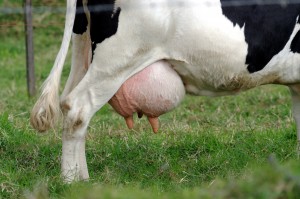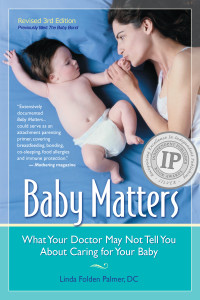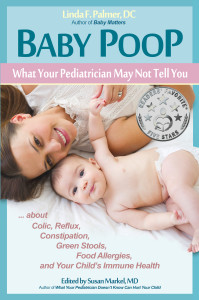 Today, many of the problems parents have with their babies are linked to new parenting and feeding techniques that have been implemented during the recent century.
Today, many of the problems parents have with their babies are linked to new parenting and feeding techniques that have been implemented during the recent century.
REVISED 8-6-13
Dr. Palmer’s most recent book also covers important aspects of milk intolerance and nutrition: BABY POOP: What Your Pediatrician May Not Tell You …about Colic, Reflux, Constipation, Green Stools, Food Allergies, and Your Child’s Immune Health
Image: Roberto Burgos S.
Colic, for instance, is far more common in the U.S. than in many other places around the world. Two chief causes for its rise are the stress suffered by babies being regularly separated from their mothers, and the common difficulties babies have tolerating the large cow’s milk proteins in infant formulas and breastfeeding mothers’ diets. Cow’s milk is a foreign substance that has pervaded every corner of our diets—starting with artificial infant feeds, but finding its way into mother’s breastmilk through the foods she eats as well. As it turns out, health problems such as childhood diabetes, obesity, bowel disease, osteoporosis, heart disease, cataracts, colic, ear infections, hyperactivity, and cancer, on the rise in both children and adults, can be strongly linked to infant feeding choices.
 While there are literally thousands of research studies, each revealing at least one of milk’s hazards, the dairy industry goes to great lengths to stifle any damaging rumors. Blanket statements, such as, “There is simply no scientific research to back up these claims,” are easily made. With a long and successful history of dairy promotion, these are readily accepted by the public. More people need to go to the real research and learn the truth for themselves. They should be very suspicious of these foreign foods being pushed on their children. They should question motives as well as possible outcomes. Although some of the dangers of cow’s milk consumption relate more to adults than to children, parents’ actions form the basis for lifelong dairy-consuming habits in their children.
While there are literally thousands of research studies, each revealing at least one of milk’s hazards, the dairy industry goes to great lengths to stifle any damaging rumors. Blanket statements, such as, “There is simply no scientific research to back up these claims,” are easily made. With a long and successful history of dairy promotion, these are readily accepted by the public. More people need to go to the real research and learn the truth for themselves. They should be very suspicious of these foreign foods being pushed on their children. They should question motives as well as possible outcomes. Although some of the dangers of cow’s milk consumption relate more to adults than to children, parents’ actions form the basis for lifelong dairy-consuming habits in their children.
 The harmful components of cow’s milk include all the major parts of it, as well as some more minor elements. Lactose is a sugar meant for babies, but it’s generally harmful to adults. When adults DO breakdown lactose, the resultant galactose can cause vision, prostate, and other problems in older adults. The proteins in cow’s milk are different from human milk proteins and cause problems of digestion, intolerance, impaired absorption of other nutrients, and
The harmful components of cow’s milk include all the major parts of it, as well as some more minor elements. Lactose is a sugar meant for babies, but it’s generally harmful to adults. When adults DO breakdown lactose, the resultant galactose can cause vision, prostate, and other problems in older adults. The proteins in cow’s milk are different from human milk proteins and cause problems of digestion, intolerance, impaired absorption of other nutrients, and  autoimmune reactions. Few of the proteins meant for baby cows are found naturally in human mother’s milk, and none are found in any natural adult human food. Even the high protein content in cow’s milk creates problems. Human babies need the saturated fats and cholesterol in mother’s milk. Bovine milk fat is not appropriately composed for human babies and is only deleterious to the health of children and adults. Cow hormones are not meant for humans, and older children and adults are not meant to consume hormones. And, cows have been selectively bred over time to create high levels of these hormones—those being the cows that grow the fastest and produce the greatest amount of milk. Cows also concentrate pesticides and pollutants into their milk fat, from their high dietary food and water requirements. The high amount of drugs now given to cows adds to this chemical soup. But we need milk to build strong bones, don’t we? Actually, heavy milk consumption is associated with increased osteoporosis.
autoimmune reactions. Few of the proteins meant for baby cows are found naturally in human mother’s milk, and none are found in any natural adult human food. Even the high protein content in cow’s milk creates problems. Human babies need the saturated fats and cholesterol in mother’s milk. Bovine milk fat is not appropriately composed for human babies and is only deleterious to the health of children and adults. Cow hormones are not meant for humans, and older children and adults are not meant to consume hormones. And, cows have been selectively bred over time to create high levels of these hormones—those being the cows that grow the fastest and produce the greatest amount of milk. Cows also concentrate pesticides and pollutants into their milk fat, from their high dietary food and water requirements. The high amount of drugs now given to cows adds to this chemical soup. But we need milk to build strong bones, don’t we? Actually, heavy milk consumption is associated with increased osteoporosis.
Deflating Dairy
The highly promoted idea that milk builds strong bones refers to the prevention of osteoporosis—this is the reason for strengthening bones. Decades of effort to demonstrate that high calcium diets chiefly derived from dairy products build strong bones have failed to prove any such correlation. In fact, the opposite seems to be true.1 It appears that high calcium intake before puberty, and especially in young childhood, may have some slight positive effect on bones, but this diet is not the answer. A balanced intake of all the bone minerals, along with adequate vitamin A, C, D, and K, is what is truly needed. A balanced intake of minerals cannot occur when the diet emphasizes dairy. Dairy’s high calcium causes relative deficiencies in magnesium and other bone-building minerals, and its high phosphorus and animal protein reduces calcium availability. Physical activity has the greatest benefit for bones—the body efficiently uses what is available to build strong bones when it senses the need. Human milk and vegetable sources are superior to dairy for calcium and other nutrients in many ways. There are fewer nutritional or other health advantages to giving cow’s milk to children than is generally believed, while there are certainly many risks.
 Almost every day another health research finding is made about whole grains, a serving of vegetables, two fruits per day, cashews, legumes, fish, or some other food, other than milk that is, and their connection to a reduced risk of heart disease, breast cancer, stroke, diabetes, or other disease. This is because cow’s milk and its derivatives today make up one-third of the adult diet, and half to two-thirds of caloric intake in children, thus replacing so much other important, nutritious food needed in the diet. This leads to insufficient intake of important vitamins, several minerals, and healthy fiber and vegetable oils. Cancer-preventing antioxidants in foods are missing in this milk diet as well. While one form of antioxidant vitamin A is added to milk (but not all dairy products), it is likely counteracted by the pesticide and drug residues. The full complement of vitamin A and associated enzymes, found in vegetables and other foods, are required for cancer prevention. Many, many more kinds of antioxidants are found in vegetables, legumes, fruits, and grains.
Almost every day another health research finding is made about whole grains, a serving of vegetables, two fruits per day, cashews, legumes, fish, or some other food, other than milk that is, and their connection to a reduced risk of heart disease, breast cancer, stroke, diabetes, or other disease. This is because cow’s milk and its derivatives today make up one-third of the adult diet, and half to two-thirds of caloric intake in children, thus replacing so much other important, nutritious food needed in the diet. This leads to insufficient intake of important vitamins, several minerals, and healthy fiber and vegetable oils. Cancer-preventing antioxidants in foods are missing in this milk diet as well. While one form of antioxidant vitamin A is added to milk (but not all dairy products), it is likely counteracted by the pesticide and drug residues. The full complement of vitamin A and associated enzymes, found in vegetables and other foods, are required for cancer prevention. Many, many more kinds of antioxidants are found in vegetables, legumes, fruits, and grains.
No other animal in the animal kingdom drinks milk beyond childhood. No other animal suffers from osteoporosis, except the occasional pet raised on human meals.
 If there remains a desire to provide milk to a child who has no diarrhea, rashes, or other intolerance reactions, organic raw whole milk would be the best choice. In raw (unpasteurized) milk there will be healthy flora, and more active forms of immune agents. In organic milk there are fewer antibiotic residues, no added hormones, and cows are given better feeds. It is not true that raw milk contains helpful lactase enzyme. Only curdled or other high-bacteria versions will contain some; produced by the bacteria. Commercial raw milks can contain a leukemia virus, but this virus cannot perpetuate among drug-free raw milk cow sources. Goat’s milk is considered by many to be superior in many ways. Much less documented information is available about goat’s milk, but it appears that the proteins are less problematic for digestion, although allergic intolerance to these can also occur. Lactose and natural hormones remain issues in goat milk although, to date, goats apparently are not injected with extra growth hormone.
If there remains a desire to provide milk to a child who has no diarrhea, rashes, or other intolerance reactions, organic raw whole milk would be the best choice. In raw (unpasteurized) milk there will be healthy flora, and more active forms of immune agents. In organic milk there are fewer antibiotic residues, no added hormones, and cows are given better feeds. It is not true that raw milk contains helpful lactase enzyme. Only curdled or other high-bacteria versions will contain some; produced by the bacteria. Commercial raw milks can contain a leukemia virus, but this virus cannot perpetuate among drug-free raw milk cow sources. Goat’s milk is considered by many to be superior in many ways. Much less documented information is available about goat’s milk, but it appears that the proteins are less problematic for digestion, although allergic intolerance to these can also occur. Lactose and natural hormones remain issues in goat milk although, to date, goats apparently are not injected with extra growth hormone.
 Although it was apparent from day one that formula was a health risk for infants, back when it was first promoted, cow’s milk for older children appeared to be a nutritional manna. And with one or two glasses a day from a healthy, range-fed animal, it likely nearly was. Since this time, however, the quality of dairy has drastically reduced while its consumption has exploded… with a massive amount of advertising help. The evidence suggesting that the early faith in milk was misplaced has been building up for decades. The dairy industry has had to take increasingly extreme efforts to keep this information out of public awareness.
Although it was apparent from day one that formula was a health risk for infants, back when it was first promoted, cow’s milk for older children appeared to be a nutritional manna. And with one or two glasses a day from a healthy, range-fed animal, it likely nearly was. Since this time, however, the quality of dairy has drastically reduced while its consumption has exploded… with a massive amount of advertising help. The evidence suggesting that the early faith in milk was misplaced has been building up for decades. The dairy industry has had to take increasingly extreme efforts to keep this information out of public awareness.
I have only touched on the tip of the existing evidence against the health claims of the milk industry promoters. Since our childhood, the dairy industry has worked hard to have dairy products enshrined in a food group of their own. Even though they were given their own space in the new Eating Right food pyramid, they found themselves placed in a small upper portion and have lobbied to have the pyramid withdrawn.2 Many nutrition experts such as Harvard’s Dr. Walter Willett3 suggest they should not be a featured group in the pyramid at all. The dairy industry has also successfully convinced many vegetarians that milk from cows is a vegetarian food. Since few substantiated health claims can be made anymore, the milk industry’s most recent promotion has recently been to simply show their product on the upper lip of celebrities of all kinds, even those who are dairy-allergic (Bill Clinton), and even on those who are too young to be consuming whole milk (the Rugrats). Before this promo, it was simply “Got milk?” While an ever-growing preponderance of scientific information points to the dangers of cow’s milk, favorable public and even mainstream medical opinion about dairy products has been very successfully maintained.
 Knowing and avoiding the potentially harmful effects that high dairy consumption and milk-sensitivity reactions can have on your child is just as important and loving as nursing, close bonding, and informed health care decisions. What we feed our children matters; how we parent them matters. These measures will lead to the best health, comfort and happiness available to a child. Parents have the power to create and enjoy healthier, happier children with brighter futures.
Knowing and avoiding the potentially harmful effects that high dairy consumption and milk-sensitivity reactions can have on your child is just as important and loving as nursing, close bonding, and informed health care decisions. What we feed our children matters; how we parent them matters. These measures will lead to the best health, comfort and happiness available to a child. Parents have the power to create and enjoy healthier, happier children with brighter futures.
Far more information on the dangers of cow’s milk, with over 100 science journal references, can be found in Dr. Linda Palmer’s book: BABY MATTERS, Revised 3rd Edition, What Your Doctor May Not Tell You About Caring for Your Baby
2. M. Nestle, “Food Lobbies, the Food Pyramid, and U.S. Nutrition Policy,” Int J Health Serv 23, no. 3 (1993): 483-96.
3. W. C. Willett, Department of Nutrition, Harvard School of Public Health, in the Boston Globe, June 8, 1999.

No Comments